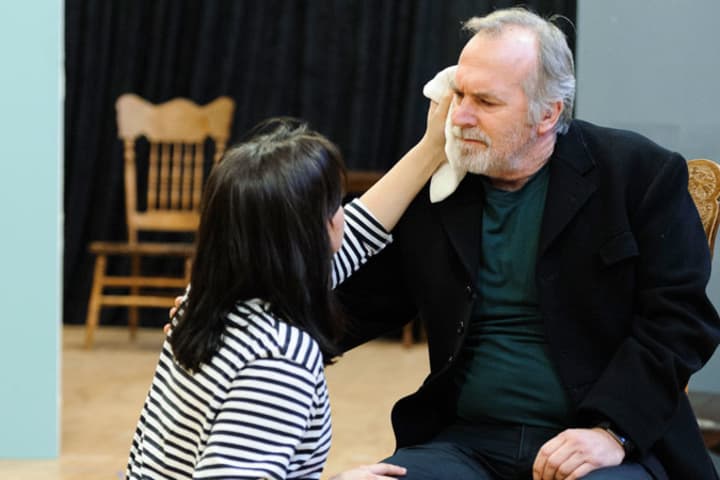We spoke with Chris Williams about how his composition and sound design plays a key role in supporting the emotional core of A Doll’s House, Part 2.
How would you describe the sound design you’ve created for A Doll’s House, Part 2? What is the world of this play?
The world of the play, for me, is contemporary but always imbued with echoes of both the past (the character’s pasts and Ibsen’s play) and the original setting in Norway. The sound is similarly eclectic, evoking all of these elements.
How did you arrive at your design choices? What influences have there been, and what practical considerations?
Writing music for the theatre is all about collaboration. Your creative team, in which I’d include the cast, is your best guide and plays a huge role in the final design. The influences, like the world of the play, are eclectic, anything from ancient stone instruments to contemporary Danish pop. I’m not a purist.
I tend not to start work with a complete design in place. I’ll bring a few ideas with me into the rehearsal room, most of which will need to be thrown out pretty quickly as the production emerges. For me, it’s much more about being present in the process and responsive to the moment. It’s hard to judge the energy of a moment, and its timing particularly, until your actors bring it to life. Then musical ideas come (and go) very quickly. Pre-empting that too much can be costly in the longer term. I think it’s natural to become attached to particular pieces of music, even as the drama starts to head in another direction so I’m always reminding myself you have to follow the drama, even if you’ve found a good tune!
What are some examples of diegetic and non-diegetic sound that you use?
I love blending the diegetic and the non-diegetic, blurring the division. One example is the door-knock. It’s such an iconic (‘diegetic’) moment at the start of the play, but it returns in (‘non-diegetic’) musical guises throughout the show. I’m also interested in sound ‘on the borderline’, by which I mean sound that hovers between diegetic and non-diegetic, the literal and the allusive. Birdsong, bells and drums echo through the piece in ways that are not literal, but could also be considered blurred memories of the sonic space of the play or the emotional tension of the moment.
What is an example of where you’ve used original composition?
In the final moments of the play, once Nora has made her decision, there is a sort of ‘coda’ to the play. I have a simple piano tune that echoes through the space (combined with slowed bird songs). We’ve heard small snippets of it through the play, but this is the first time the full thing is revealed.
What music has been included from existing sources?
At the moment we’re playing with the idea of introducing a Tarantella (an italian dance), which is a key dramatic element from Ibsen’s original. The music returns to Nora, at a crucial moment in Part 2, though in a haunted and haunting form.
Is there a particular moment in the play that you’re especially excited about, regarding your composition/sound design?
We have both an opening and closing sequence that are filmed and heighten the world ‘outside’ the house, which is also linked to Nora’s ‘inner’ world. Both of them are real moments for the music to be its own character. Unlike the rest of the play, where anything too intricate runs the risk of getting in the way of the language and the drama, these filmed moments are something quite special sonically.
In your opinion, what is A Doll’s House, Part 2 about? How does your composition/sound design support the central themes?
At the heart of the play is the pain and beauty – the tragic desperation – of self-preservation in the face of conflicting world-views. I don’t think there could be any more important theme for the world today. It’s also about the difficulty of doing and the trauma of not-doing. The show doesn’t offer any easy solutions to any of these but presents them sympathetically and with striking clarity that will convince everyone the play is written about them.
Musically it’s about playing that truth. It only works if we have sympathy for everyone in the play, and we really do. I see the music as key to making sure that amidst the laughs, we still feel the power of the big ideas and the emotional core of the piece.
Is there anything else about your composition/sound design that you’d like to share with students?
Don’t be afraid to make mistakes musically or just try something in the rehearsal room even if you think it might be wrong. It’s scary, but it often leads in new directions, to better solutions, and in any case safe ideas can be boring!
For me, writing music for the theatre is always about looking for solutions rather than knowing the answers in advance. We’re still discovering things about the play, and I’m sure we will continue to do so for some time yet! It’s all part of the thrill of working in theatre.
A Dolls House, Part 2 plays at Southbank Theatre from 11 August 2018.
Published on 13 August 2018





